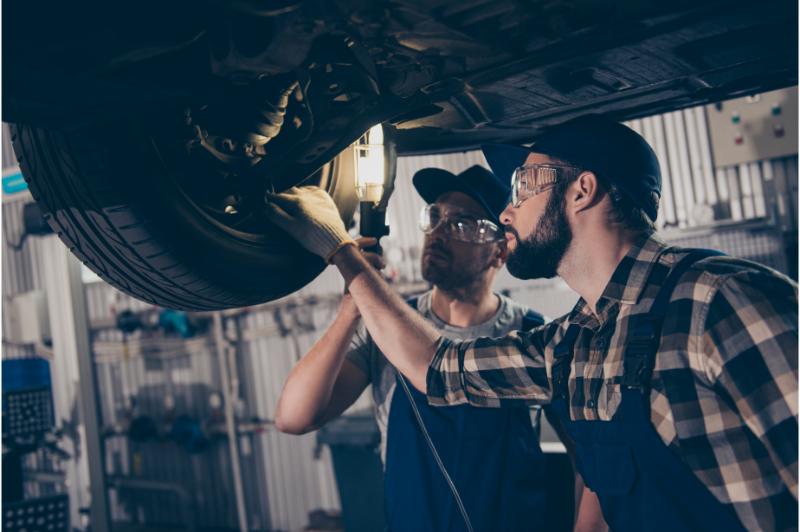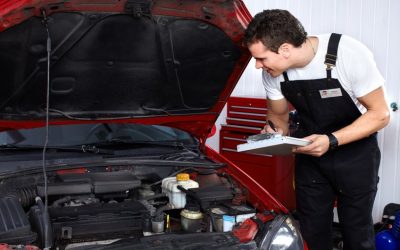Your vehicle’s brake system is one of its most critical safety features. Whether you’re stopping at a red light or slowing down on a steep hill, well-functioning brakes give you control and confidence on the road. But like any system, brakes wear over time—and when they do, it’s important to schedule a brake service before minor issues turn into major problems.
If you’re wondering what’s involved in a professional car brakes repair appointment, this guide walks you through the process, explains common issues, and highlights when it’s time to seek service. Understanding what to expect helps you make more informed decisions about your vehicle’s care and safety.
Why Brake Service Matters
Brakes don’t fail all at once; they usually show signs of wear long before serious issues arise. Ignoring early symptoms like squeaking, grinding, or a soft pedal can lead to costly repairs and even put you at risk on the road.
Regular brake service ensures:
- Responsive stopping power
- Even wear of brake pads and rotors
- Optimal brake fluid performance
- Extended lifespan of brake components
Drivers who prioritize regular inspections and timely repairs often enjoy better braking performance and peace of mind, especially in high-traffic or hot-weather environments.
Common Signs You Need Car Brake Repair
Knowing when to schedule brake service is just as important as understanding what it involves. If you notice any of the following symptoms, it’s time to get your brakes checked:
- Squeaking or grinding noises during braking
- Vibration or pulsation in the brake pedal
- Increased stopping distance
- Brake warning light illuminated on the dashboard
- Soft or spongy pedal feel
- Burning smell while driving or braking
These indicators can stem from worn brake pads, warped rotors, low fluid levels, or even more serious hydraulic issues.
What Happens During a Full Brake Service Appointment
A professional brake service goes beyond just replacing brake pads. It involves a complete inspection and maintenance of the braking system. Here’s a breakdown of what a typical appointment might include:
1. Brake System Inspection
Technicians begin with a visual and mechanical inspection of the brake components, including:
- Brake pads
- Rotors and drums
- Calipers
- Brake lines and hoses
- Master cylinder
- Brake fluid levels and condition
This helps identify worn or damaged components and any issues that might affect braking efficiency.
2. Brake Pad Replacement
If the pads are below the manufacturer’s recommended thickness, they’ll be replaced. New pads are installed with proper lubrication on contact points to ensure even wear and quiet operation.
3. Rotor Resurfacing or Replacement
Rotors can develop grooves or become uneven over time. Depending on their condition, they may be resurfaced to restore a smooth braking surface. If they’re too thin or damaged, replacement is the safer option.
4. Brake Fluid Check and Replacement
Brake fluid is vital for hydraulic pressure, but it absorbs moisture over time, which can reduce performance and lead to corrosion. If the fluid is dark or contaminated, a flush and replacement will be recommended.
5. Caliper and Hardware Service
Calipers are checked for sticking or uneven movement, and hardware like clips and shims may be cleaned, lubricated, or replaced to ensure everything moves freely and efficiently.
6. Test Drive
After the service, the vehicle is test-driven to confirm the repairs were successful and that the brakes are functioning properly under real driving conditions.
How Often Should You Schedule Brake Service?
While there’s no one-size-fits-all answer, most vehicles need brake inspections at least once a year or every 12,000 miles—whichever comes first. Factors that influence brake wear include:
- Driving habits (frequent braking, towing, city driving)
- Road conditions (hilly terrain, stop-and-go traffic)
- Climate (heat, moisture, dust)
Drivers in hotter, dustier regions may require brake service more frequently due to accelerated component wear.
Benefits of Preventive Maintenance
Addressing brake issues early can help you avoid costly repairs later. Here are a few long-term benefits of consistent maintenance:
- Improved safety: Properly functioning brakes give you greater control and shorter stopping distances.
- Lower repair costs: Catching issues early often means replacing one component instead of several.
- Extended lifespan: Well-maintained brakes last longer and perform more reliably.
- Better performance: Smoother, quieter operation and more consistent braking under pressure.
For those looking to keep their vehicles in top shape year-round, working with a trusted automotive repair shop ensures every part of your braking system is inspected and serviced with care.
Final Thoughts: Brake Service Is Essential for Safe Driving
Brakes are not a “set it and forget it” system. Routine service and inspections are vital to ensuring safe stops and reliable performance. Whether it’s a routine pad replacement or a full system overhaul, knowing what to expect during a brake service appointment empowers you to take better care of your vehicle.
If you’ve been experiencing braking issues or simply want to stay ahead of potential problems, scheduling a car brake repair appointment is a smart move—especially before seasonal changes, road trips, or long-distance travel.









